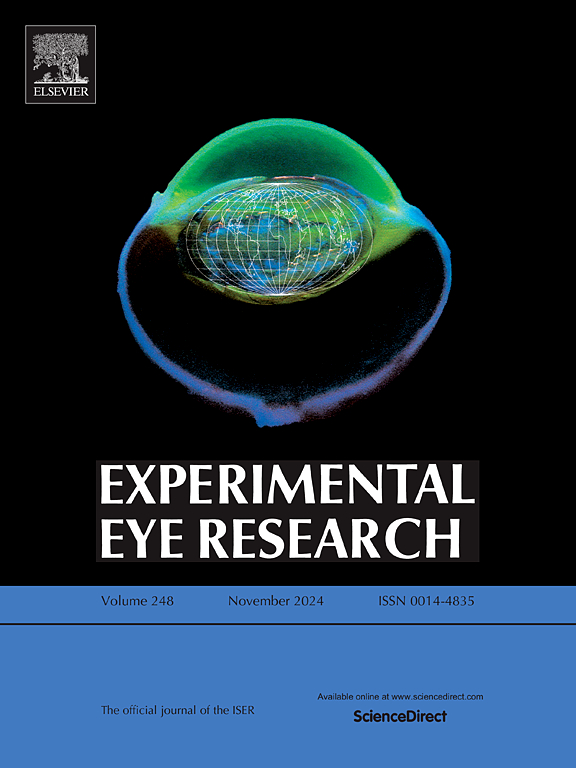A standardized in vivo protocol for ocular biodistribution of gold nanoparticles
IF 3
2区 医学
Q1 OPHTHALMOLOGY
引用次数: 0
Abstract
Effective drug administration plays a pivotal role in the treatment of eye diseases. Each route of ocular administration has its advantages and limitations, but a common challenge is the low bioavailability of drugs at the target sites. New delivery nanosystems are required to ensure sufficient drug concentration over time at the target in order to improve therapeutic efficacy. Gold nanoparticles represent a promising strategy for improving drug delivery to the eye, but they can be difficult to track in biological systems. To optimize the formulations, it is crucial to understand the biodistribution profiles of nanoparticles in the eye. Designing, interpreting and compiling research on the ocular biodistribution of nanoparticles raise major challenges, particularly considering the various nanoparticle-based ocular delivery systems and the multiple available animal models. The in vivo spatiotemporal distribution of nanoparticles in the eye is generally measured at specific time points after animal euthanasia and eye collection. In this technical article, we propose a detailed standardization of in vivo protocols for ocular biodistribution studies of gold-based delivery systems in rabbits following topical application. The protocol covers all steps, including enucleation, eye dissection of various ocular tissues and their digestion, as well as ex vivo analysis of gold (Au) atom content from gold nanoparticles by inductively coupled plasma-mass spectrometry (ICP-MS) at specific time points.
金纳米颗粒眼部生物分布的标准化体内方案
有效的药物管理在眼病的治疗中起着关键作用。每种眼部给药途径都有其优点和局限性,但一个共同的挑战是药物在靶点的生物利用度低。为了提高治疗效果,新的递送纳米系统需要确保足够的药物浓度随时间在靶标处。金纳米颗粒代表了一种很有前途的改善药物输送到眼睛的策略,但是它们在生物系统中很难追踪。为了优化配方,了解纳米颗粒在眼睛中的生物分布是至关重要的。设计、解释和汇编纳米颗粒眼部生物分布的研究提出了重大挑战,特别是考虑到各种基于纳米颗粒的眼部传递系统和多种可用的动物模型。通常在动物安乐死和取眼后的特定时间点测量纳米颗粒在眼内的体内时空分布。在这篇技术文章中,我们提出了一项详细的标准化体内方案,用于局部应用后的兔体内金基给药系统的眼部生物分布研究。该方案涵盖了所有步骤,包括去核,各种眼部组织的眼解剖及其消化,以及在特定时间点通过电感耦合等离子体质谱(ICP-MS)对金纳米颗粒中的金(Au)原子含量进行离体分析。
本文章由计算机程序翻译,如有差异,请以英文原文为准。
求助全文
约1分钟内获得全文
求助全文
来源期刊

Experimental eye research
医学-眼科学
CiteScore
6.80
自引率
5.90%
发文量
323
审稿时长
66 days
期刊介绍:
The primary goal of Experimental Eye Research is to publish original research papers on all aspects of experimental biology of the eye and ocular tissues that seek to define the mechanisms of normal function and/or disease. Studies of ocular tissues that encompass the disciplines of cell biology, developmental biology, genetics, molecular biology, physiology, biochemistry, biophysics, immunology or microbiology are most welcomed. Manuscripts that are purely clinical or in a surgical area of ophthalmology are not appropriate for submission to Experimental Eye Research and if received will be returned without review.
 求助内容:
求助内容: 应助结果提醒方式:
应助结果提醒方式:


